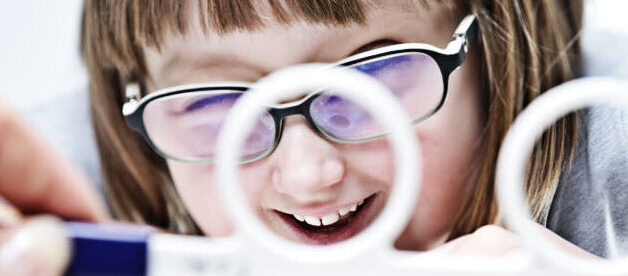Vision Therapy For Amblyopia

Amblyopia is referred to as the lazy eye. It is identified as one eye reducing its vision compared to the other eye in an individual. Lazy eye is a visual illness that starts at the younger age of a child or is found in adults as an impact of traumatic brain injuries. An individual having the lazy eye condition can fail to show any symptoms. It is paramount to go for eye examinations, whether you are at the risk of developing lazy eye syndrome. Eye conditions treatable by vision therapy include strabismus, lazy eye, saccadic dysfunction, and eye teaming. Here is how lazy eye vision therapy works:
Child Closing Eyes Therapy
This therapy uses filters, lenses, prisms, and more specialized devices. Passive vision therapy encourages your eyes to compensate. An operational procedure is to retrain the interaction between the brain and how it interprets visual data.
Occlusion
Complete occlusion through patching for better vision and partial occlusion is done through atropine eye drops or contact lenses. No matter the type of occlusion, their main principle is to achieve better eye visual forces and give it room to develop stronger neural connections.
Patching in occlusion is various, including adhesive patches and decorative patches. All the patches can perform effectively if prescribed correctly, and you follow the prescriptions religiously.
Adhesive patches are less costly, easy to use, and widely available. However, the adhesive patches can cause allergic reactions if you have sensitive skin and discourage binocularity. Compliance with the adhesive patches to young children can be an issue. If not closely monitored, adhesive patches are easy to remove and peak around.
Decorative patches have child-friendly designs that encourage and improve the children’s compliance in putting them on. The decorative patches also allow children to designs of their liking.
Isoametropic Amblyogenic
Atropine works effectively if your eye is hyperopic. The drop works by making the near vision blurry in the eye that is not affected, forcing the patient to depend on the eye with amblyopia. It is a perfect alternative for patients who are not fans of eye patches therapy. Unlike eye patching therapy, atropine drop cannot be removed or peeked around by your peers. It is the most appropriate treatment for patients with extra energy, like young children, who would have fused with an eye patch. It is also recommended for older patients that might have cosmetic concerns.
This is a suitable treatment for users with extra energy in their bodies who are likely to fuss around with eye patches or be peeked around by their peers. This vision therapy option encourages binocular vision.
However, its drawbacks when using atropine are that it needs to be filled up on a prescription and the stinging feeling you feel when putting it in your eye. It is also very sensitive to light.
Bangerter Foils
The Bangerter foil is applied to the lens of a spectacle to produce a blurred vision on both the near and far distance. As the vision begins to improve in the lazy eye, the doctor will reduce the grade of blur by changing the foils used. The foil assists in promoting binocularity and is excellent for older children concerned with cosmetics and aesthetics.
However, be keen when using a Bangerter foil on non-compliance patients since it is effortless to peek near glasses.
Vectogram
It assists in the fusion and expansion of fusional vergence in vision therapy. The vectograms help shows how the binocular system is performing.
Vision Therapy is an effective visual treatment method that will help treat binocular dysfunction, which is brought about by the lazy eye condition. Initiate vision therapy today to function without strain with sound, visual skills, and high status of binocularity. Visual therapy has a series of arranged activities, customized, personally prescribed, and monitored to increase efficiency in visual skills. Vision therapy will improve your visual system’s endurance, speed, flexibility, and accuracy. Visual therapy for lazy eyes aims at enhancing an individual’s binocular vision, reading fluency, visual sharpness, visual processing abilities, and depth perception.
Flexibility and Accuracy
Visual therapy for lazy eyes aims at improving an individual’s binocular vision, reading fluency, visual sharpness, visual processing abilities, and depth perception.
For more valuable information visit the website




